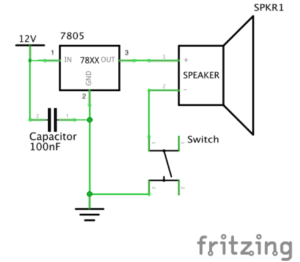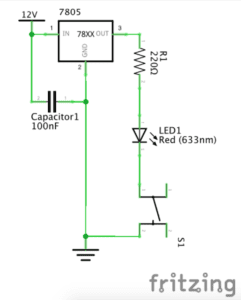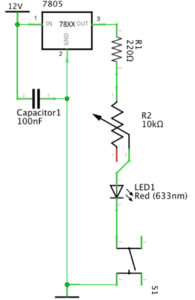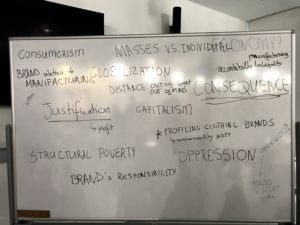The readings follow class discussions very closely, providing context and elaboration on the subjects. Sasha and I are currently developing ideas for our future projects, and have been thinking about following the manufacturing process by ordering tailoring as part of our research. The “Garment Design” emphasised how this stage heavily contributes to weather an article of clothing is considered sustainable. (*Planning to bring this up to Sasha for a discussion, I am curious what she retained from this stage in the reading as we prepare our plans*) I would also like to note that Group 2’s presentation on textiles was very effective as I was able to understand Payne’s references and more importantly why she was using the particular references in the context of ecology. In the quotation “purchasing a 250g cotton T-shirt implies purchasing 1,700g of fossil fuel, depositing 450g of waste to landfill and emitting 4kg of CO2 into the atmosphere” the figures are absolutely startling and I would love to see a notice as such on the front of a T-shirt (similarly how nutritional information/ ingredients have to be provided legally) and then to do an observation of costumer reaction. Hypothetically if I were to entertain this short-term ethnographic research pitch, I would do separate samples of 1) the notice being on the clothing as the customers approach it; and 2) providing this information to people at check-out. I would like to see how or if this would change people’s approach to shopping in Fast Fashion stores. At leat for me, I believe this would encourage to really consider if this is a “need”, a “want”, or “autopilot/ store influenced” decision making. Glad I have a change to take this course and learn, so I too can be much more conscious about the larger picture when shopping. Another interesting point I would like to mention is the choice of the investigation location. I think I great input can be gained by looking at a country like Australia, as it is very self-sufficient and is a smaller sample that looking at the content of North America (for example). From this patterns and considerations can be drawn and applied to larger scope operations.
Recitation 1. Circuit Basics by Eva
Recitation 1: Electronics & Soldering
Instructor: Marcela
Partner: Ally
Materials)
- Breadboard – a device for temporary prototyping electronics as the layout allows easy access for making connections and experimentation in the production stages.
- LM7805 Voltage Regulator – to maintain voltage output – a regulator is incorporated for sustainability of the Volt current. In this case, it allowed the 12V DC to be at 5V DC which would not blow the LED.
- Buzzer – the output signal once pressed (input). For our circuit prototyping, it allowed us to confirm that the circuit was functioning.
- Push-Button Switch – (can be input or output) let the electricity flow through the circuit.
- Arcade Button – an alternative input element to the push-button switch. Serves the same purpose, with a different design.
- 220 ohm Resistor – The resistance that maintained our LED intact. An additional obstacle for the voltage to pass.
- LED – light-emitting diode, served as output when circuit was functioning.
- 100 nF (0.1uF) Capacitor – for the LM7805 Voltage Regulator to be functional.
- 10K ohm Variable Resistor (Potentiometer) – With this resistor we were able to control the current going to the LED, thus being able to dim it and brighten it.
- 12 volt power supply – The 220V AC was translated to 12V DC which was a safe Voltage for us to prototype and experiment on.
- Barrel Jack – were able to connect the power supply to the Breadboard with the Barrel Jack, (much like a plug power converter).
- Multimeter – although contains many more options, we used the Multimeter to detect the appropriate resistor (of 220 ohm).
- Several Jumper Cables (Hook-up Wires) – flexible, easy to plug in wires that worked very well in Breadboard connections for our circuits.
CIRCUTS
- Buzzer


Although fairly simple, this circuit was crucial in my foundational understanding of Energy and Ground. We specifically made sure to use the red jumper cable to connect the electricity flow to the buzzer component – to visually emphasise the concept of ‘power’. In addition, the black jumper cables were emphasising the connection to the Ground.
2. LED


Although we were pretty lucky in managing to find the correct corresponding holes on the Breadboard in the first circuit, the second one rose some challenges. In this phase, it was reiterated that the ‘legs’ of the LED are very specifically classified – the longer wire corresponds to positive/power, and the shorted leg corresponds to negative/ground. After we figured this out, we were able to switch around the LED and get the electricity running though the circus, thus allowing the LED to light up.
3. Dimmable Light


In this phase, we added a Potentiometer to customise the brightness of the LED. Although I cannot speak about the first attempt (as it was not successful), we decided to build it from scratch again. I think this was an important aspect, because once we realised we cannot track the bug/error, we chose to not waste time in rebuilding each part of the circuit separately. I now reflect that we were able to do this as it is a still fairly simple design, which got me wondering how I would tackle such an issue on a larger prototype. How the two attempt might have been different? In this stage, I realised it was crucial to understand the logistics behind all of the components, because as we gained a greater understanding of the hardware we were working with (by the help of the fellows), the logical layout of the design made sense (in my head) thus it was more manageable to replicate it physically.
QUESTIONS
1. While reading “The Art of Interactive Design” I was able to differentiate between the concept of “interaction” and “reaction” (“It takes two people to have a conversation, and it takes two actors to have an interaction”). When thinking about the circuits we constructed, I applied the concept of the Degrees of Interactivity to better comprehend what our end-goal was. For example, when thinking about the buzzer – a button is pressed, therefore a sound is outputted – which I would consider a low degree of interactivity. The user does not have a choice of input, and there is only one possible output. In comparison, the addition of the Potentiometer allowed the degree of interactivity to rise – the user now has a choice of where to turn the ‘pointer’, and thus the output varies also. I also began to think how else this degree might increase in my future creations – the instructions – THE CODE. By customising the settings (both possible input and output) the degree of interactivity rises. This really sparked my curiosity of “what else I can make happen”, especially in relation to Art and Design!
2. I currently began exploring how Artificial Intelligence is used for style transferring when creating Art [current favourite digital artist Gene Kogan]. I have never associated art with computers before University, so to start realising how well they interlink when creating is very motivating for an aspiring artist in the Digital Age. This emerging technological era just shows how tools like Interaction Design or Physical Computing can be customised to flourish creativity. I realise the power you gain once you learn the native language, in this case ( the instructions through ) CODE in relation to the hardware. All of these tools aid us, but cannot do for us, therefore learning to follow an idea from initial stages of development to an end-product requires, not only diligence, but fundamental understanding of the “so-called place” you are creating in or with (online / Breadboard / robotics / etc). For Art to be Interactive, the artist has to know their direction they want to take with their audience and the Digital Age tools serve as an accessible source for exploration of own ideas.
W2: “Short-Term Ethnography” – Eva
When on the topic of Ethnography, the authors notes the importance of understanding how short-term and long-term research differs. In the quotation about short-term investigations they state that it “takes a more deliberate and interventional approach to that of long-term participant observation and is also theoretically engaged”, from which I understood the importance of the preparation stages of research. When the subject of the investigation (or the question) is raised, it it crucial to decide what the aim is – even as it may change throughout – understanding your initial goal will allow a more precise and detailed plan to formulate. The concept Pink defined as an ‘‘ethnographic place’’ (2009) recognises how interlinked the global world; I particularly liked the analogy of it being the “entanglements” rather than “localities”. I am curious to raise the question how my peers interpreted the concept of an ‘‘ethnographic place’’. As our discussions develop in class, I started formulating a strong understanding of the idea of everything co-existing in this ecosystem, and although this sounds straight forward its a pretty complex concept to wrap your mind around.
Ethnographic fieldwork, such as observations, may be tedious but it provides insights on the subject that cannot be gathered otherwise. Just like we mentioned in class: What the individual Says, Does, and Say they Do are three completely different notions. This article also allowed me to appreciate the skill that formulates as one conducts ethnographic research. Once you’ve practiced the components and understand their contribution to the end-goal (“three types of intensity: of the research encounters themselves; of the ethnographic-theoretical dialog; and of the post-fieldwork engagements with materials”), I would assume the framework would allow more efficiency in future projects. I am very excited to put some of these concepts into practice on Saturday as we explore mass production and consumption in the field.
W2: “Accidentally sustainable?” – Eva
I would like to start by quoting Woodward as she states that “research into everyday clothing practices can be usefully developed as an approach to understanding sustainable fashion” which was the first time I had heard such a claim. This article developed by understanding on the topic we briefly mentioned in class: how do we define clothes, and fashion as whole when it engulfs everything from the mere need for survival to extreme luxury. The author encourages people to start depicting the Fashion Industry from a perspective different to what we, as a society, have constructed. By highlighting that “understanding clothing ethnographically entails seeing fashion and clothing from the perspective of the people wearing and selecting clothing, which is important in showing that the meanings of clothing cannot be reduced to an externally defined fashion system”, Woodward shines as much light of importance on the consumer side of the equation. As I start to also develop a greater understanding of the functionality and purpose of different production stages in Fashion, I realise what an elaborate maze this gigantic industry really is, which in turn brings me to the title of the article, how could one expect something to be Accidentally Sustainable? To me, the author’s tone translated a message of the importance of knowledge. The way she referred to consumers of the clothes made me realise I was not as much of a conscious consumer as I’d wish to be. Then I wondered, there must be some many more individuals that would make accounted choices only if they had access to this knowledge. The article really made me question globally as a concept too, and the extensive difference between different regions’ approaches to environmental questions. I am really glad I am able to raise these questions, because I too believe that through knowledge and understanding we can overcome some of the issues that ignorance brings.
W1:Topic Presentation Reflection- True Cost – Eva (+Sasha, Hope)
This week I gained a new deeper curiosity for the sphere of Fashion. The brief overview of the industry through class discussions was helpful in explaining my perspective, but I have to account the documentary True Cost for providing a foundational level of understanding of the logistics. As I was viewing it for the first time, I had to keep pausing and replaying the statistics. I pondered how the clothing I order on taobao did not come from some Magic Box, and how I never once before took the time to be a continuous consumer while online shopping, or any type of clothing shopping for the matter. It was a wakeup call.
The world around us is vast. The population is growing and so is the industrial transformation of nature. I am a curious person, and I like to explore topics of relevance to today’s society. I cannot believe how quickly the world is developing around me and to slow down my thought flow I use the method of mind mapping. I use a large A3 paper and some colourful markers and I jot down words and phrases in relation to what is on my mind. I like to see the collage and draw parallels and other relations. Fun fact: the majority of the conclusions I derive to in fact state that “everything is in unity because all is related in one way or another”. As I was exploring some key concepts from the documentary I thought I would be great to try something like that for our Topic Presentation. The activity itself is very encouraging because there is no “right answer” and it can draw different students to different interest focuses, rather than guiding their understanding with specific questions. Even looking at the board (*picture attached*) and seeing how the phrases relate suggest the circulation of this industry to be very profit orientated. I have never before had such a strong feeling of a relationship between the Fashion industry and the concept of oppression. I want to explore this by gaining further understanding in the course of how the industry operates.
Dipping a toe into the sea of Fashion has provoked me to question my own moral values and opinions. I think that is the most important thing I hope to gain from higher education; to be able to learn the ability to question everything, and most importantly yourself.
..